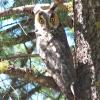Mendoza,
Thanks for your efforts and applying statistical analysis to Green’s database.
Below are some general observations/comments.
I don’t quite follow the premises assumed for your conclusions:
1) That correlation to population is suggestive of fabricated reports.
2) That correlation to population density is consistent with the model of receiving a report of an animal.
3) That correlation between black bear population density and report frequency is the expected result if misidentification of black bears is a significant contributor to the Bigfoot phenomenon.
On premise #1, I would imagine that states with higher human population will yield higher number of hoaxes (there is always a % of those). But, I would also imagine that if BF was a real creature, that states (that contain BF habitat) with higher human populations will also yield higher number of reports. Thus, I would expect some correlation between frequency of BF reports and human population, and this would not necessarily imply hoax.
On premise #2, I also agree with BigTreeWalker, in that human population density should be more granular (maybe by county instead of state) in order to reflect the true low population density of those places in Northern CA, OR, and WA that have higher BF frequency counts. I am curious if you find the opposite results (once adjusting for human population by county) whereas there is a negative correlation between BF report frequency and high human population density. That is what I would expect. For example, I would expect that Del Norte County and Tuolumne County in California will have more BF reports than West Contra Costa County, despite WCC County having higher human population density.
On premise #3, I always thought that BF sighting reports will be positively correlated with Black Bear population density because they share the same habitat. My rule of thumb has been: if there is bear and deer population present, then there is a higher probability of finding BF present. Thus, a positive correlation between frequency BF sighting reports and black bear density does not suggest or imply misidentification of BF as black bear.
I will love to see your work applied to PNW states by county and see what you find. Instead of differentiating (testing the different hypotheses) by states, you differentiate by counties. We can still learn much from this effort. Also, you might be able to check if any BF reports are present in counties that have zero black bear populations (if they exist, I have not checked). In my mind, if there is no bear habitat present, then the report is more likely to be a hoax.



